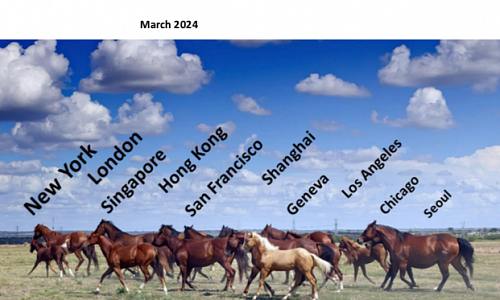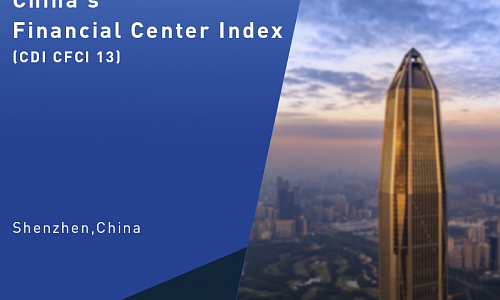
2018 - In the News
The Shenzhen Special Economic Zone (SEZ) in South China's Guangdong Province, turned 38 years old on Sunday, as experts across China looked back at the achievements and challenges of China's most innovative city as the nation enters a new era of reform and opening-up.
"The success of Shenzhen is the success of its system of institutional reform and industrial policies, which produced the best market economy institutions," Song Ding, a Shenzhen-based market analyst at the China Development Institute, told the Global Times on Sunday. "The level and quality of development seen in Shenzhen during the past 38 years is unprecedented," added Song.
The Shenzhen SEZ was formally established on August 26, 1980, one of the four SEZs approved by the central government a year earlier, as part of China's original reform and opening-up plan.
A typical underdeveloped rural area before the 1980s, Shenzhen is now one of the world's largest cities, with a population of over 12 million people. Shenzhen's development went through several phases, starting with the so-called "Three Import and Compensation Companies," a make-shift arrangement for foreign companies that provided equipment and technology while Chinese companies provided land and labor, mostly for export-oriented industries.
After decades of constant reform and innovation, Shenzhen's industry climbed up the value ladder, and it is now the center of China's high-technology industry, home of world-leading companies such as Huawei and Tencent.
"The China-U.S. trade war comes at a crucial moment of Shenzhen's development. The challenges it brings will stimulate the city to deepen reform and opening-up, forcing us to upgrade the model of development to deal with the new international circumstances," said Song.
"We are very confident that Shenzhen can rise to the next stage of solid development," he said.
Shenzhen, the metropolis that links Hong Kong to mainland China, is expected to form 33 metro lines by 2035, expanding the current mileage by 4.7 times, Yicai.com reported.
According to the plan of the Shenzhen Metro Group, the total mileage of the city’s rail transit will reach 580 kilometers. While by 2035, the mileage will add up to 1,335 kilometers, which will be 4.7 times the current scale.
“The population in Shenzhen is growing very fast, which brings great pressure on urban traffic,” said Wang Guowen, director at the Logistics and Supply Chain Management Department of the China Development Institute. “The east-west traffic flow is getting intense and the concentration is high.”
Insiders think this goal is fully achievable both in terms of technology and financial resources. Previously, the construction of the subway in Shenzhen was mainly based on government investment.
The government also has a large margin of its investment capacity and project financing capabilities.
Up to now, only Beijing and Shanghai subways have operated more than 600 kilometers in total mileage.
Abu Dubai, Dubai and Abu Dhabi have all bounced back in the 24th Global Financial Centres Index, a financial markets competitiveness report released by British research consultancy Z/Yen Partners.
Developed in conjunction with the China Development Institute (CDI) since 2016, and updated every September and March, the Z/Yen Partners’ Global Financial Centres Index now evaluates the competitiveness of 100 financial centres across the globe, from London, New York and Hong Kong through to Baku, Almaty and Dalian – using 137 quantitative measures compiled from leading data sources and over 30,000 financial centre survey assessments.
In respect to the metrics used, which draw from sources such as the World Bank, the OECD, and the UN, the instrumental factors are broken down into the five broader categories of business environment, human capital, infrastructure, financial sector development, and reputation, with further inputs drawn from a range of global consulting firms including A.T. Kearney, Capgemini, Mercer, The Boston Consulting Group, PwC and KPMG.
Overall, ongoing jockeying at the top has seen Ney York once again overtake London at the top of the table over the past six months, with Shanghai also eclipsing Tokyo to claim the fifth spot and Hong Kong and Singapore gaining ground on the top two in third and fourth. Yet, Z/Yen Group Executive Chairman Michael Mainelli makes the strong point in the report preface that the real story is the long-term trend, which since its 2007 inception has witnessed a persistent shift from the West.
While Asian centres in particular have provided a challenge to long-term western predominance – with Z/Yen stating that it’s ‘highly likely an Asian centre will have the top slot very soon,’ the average rating of the top five centres in each geographical region has also seen the Middle East & Africa, Latin America, and Eastern Europe & Central Asia all make up ground on Western Europe and North America over the past ten years – with the emerging regions also bouncing back strongly after a dip in the last report period to March.
Contributing to the uptick in the Middle East were the rebounding fortunes of the Dubai and Doha financial markets, which rose significantly in the rankings (respectively up 4 spots to 15th, and 13 spots to 34th), along with Abu Dhabi (26th globally) which dropped a place but improved its overall ratings performance. A similar result was achieved in Riyadh (down one spot to 69th but up 15 rating points), while Bahrain was down in both measures to drop 8 spots to 59th.
In terms of performance over time for the top markets of the Middle East & Africa region, Doha has made its way back into the after a heavy drop following the dive in global oil prices which hit the region in 2015 – but remains in fifth spot for the region – while Dubai remains steady at the top with steady performance throughout. Tel Aviv (which shot up nine places in this reporting period), Abu Dhabi and Casablanca (up 4 spots) – the second, third and fourth markets of MENA – have drawn neck and neck, ranked from 25th to 28th globally.
For regional leader Dubai, its rise to 15th spot globally was supported by some stand-out assessments in certain sectors as adjudged by respondents working within these industries alone, including featuring in eighth place globally for banking and ninth for professional services. In terms of its stronger areas of competitiveness Dubai placed in the top dozen for all of business environment, human capital, infrastructure, and financial sector development.
“Financial centres can, and do, control large amounts of their destiny. GFCI 24 shows the wide range of strategy, competition, specialisation, and, may I say, style in which they do it,” Z/Yen’ CEO says in conclusion, with Oh Keo-don, the Mayor of Busan (a designated financial capital in South Korea now 44th on the list), adding in the report; “In the face of the 4th Industrial Revolution, new types of financial products based on AI, blockchain and cloud technology have enabled innovative forms of financial transactions that transcend space and time.”
Together with the established financial centres of Asia, especially Singapore and Hong Kong, it’s telling that the biggest market regulators in the Middle East have all made a concerted push towards encouraging the fintech sector to gain a competitive international edge – with the help of some of the world’s leading consultancies, including Accenture in Dubai, the Abu Dhabi Global Market in conjunction with KPMG, Deloitte together with the Saudi Arabian Monetary Authority, and Roland Berger in Bahrain.
An economist called for more efforts to stimulate the private sector as the Chinese economy has entered a new period that requires a higher level of innovation and entrepreneurship.
Given a new era of reform and opening up, China needs to ponder how to further propel the private sector in a bid to make the broader economy more vibrant, said Fan Gang, president of the China Development Institute, a Shenzhen-based think tank.
Fan, a former member of the central bank's monetary policy committee, made the remarks during a two-day session of the China Development Forum starting Sunday.
China will increasingly rely on endogenous innovation to spur economic development in the future, a process that needs risk takers from private businesses, while state firms, always slower and more cautious in decision-making, are relatively less vigorous and not that willing to take risks, Fan said.
The private sector witnessed booming growth thanks to the country's reform and opening up during the past decades.
A State Council conference in August hailed private businesses as a "vibrant force" in national economic and social development, which currently provide more than half of governments' tax incomes, 60 percent of China's GDP, 70 percent of technological innovation and 80 percent of urban jobs.
There has been a raft of favorable policies that protect and motivate private entrepreneurs and create a better business environment for them, Fan said.
The government has reiterated its stance will not change, vowing stronger financing support, bigger tax reductions and better intellectual property protection to further encourage private companies, in particular, small and medium-sized enterprises.
BEIJING, Sept. 20 (Xinhua) -- China has reassured private businesses of continued, equal and favorable policies compared with their state-owned counterparts as the private sector has become a significant part of the economy and a major source of market vitality.
Premier Li Keqiang reiterated the stance Wednesday during the Annual Meeting of the New Champions 2018, also known as Summer Davos, in north China's city of Tianjin.
The country will implement and optimize policies that support the development of private and non-public economy and remove relevant constraints, Li said.
The Chinese government had constantly taken measures to reduce taxes and fees on small, medium-sized and micro enterprises, while reducing their financing costs and easing their financing difficulties, Li said. "Most of these enterprises are privately-owned and have generated the most jobs for the country."
The premier's remarks came as the Chinese economy has entered a new period requiring a higher level of innovation and entrepreneurship.
"China will increasingly rely on endogenous innovation to spur economic development in the future, a process that needs risk takers from private businesses, while state firms, always slower and more cautious in decision-making, are relatively less vigorous and not that willing to take risks," said Fan Gang, president of the China Development Institute, a Shenzhen-based think tank.
"In a new era of reform and opening up, China needs to ponder how to further propel the private sector in a bid to make the broader economy more vibrant."
The private sector has witnessed booming growth thanks to the country's reform and opening up during the past decades.
Private businesses have emerged as a vibrant force in national economic and social development, currently providing more than 60 percent of China's GDP, 60 percent of fixed-asset investment, 75 percent of technological innovation and 90 percent of new urban jobs.
By the end of 2017, there were 27 million private companies across the country.
However, given increasing downward pressure on the economy and a changing, complicated situation at home and abroad, some private businesses are grappling with lackluster growth and financing difficulties.
Analysts believe more efforts are required to protect and motivate private entrepreneurs and create a better business environment for them.
Central bank governor Yi Gang has directed financial institutions to equally treat state and private companies in terms of making loans and issuing bonds, and encouraged big lenders to set a good example and provide better services. In China, it is usually more difficult for private businesses, considered more vulnerable to economic volatility, to secure loans than state firms.
The People's Bank of China will guide lenders to continue financing cash-starved companies that have good prospects, stable market share and technological advantages, Yi said.
More favorable policies are in the pipeline as the government has promised to take more action, including introducing bigger tax reductions and implementing better intellectual property protection, to further encourage private companies, particularly small and medium-sized enterprises.
New York has displaced London to become the world’s top financial center, with Brexit to blame.
According to The Global Financial Centers Index produced by the China Development Institute and London-based think tank Z/Yen Partners, New York surpassed London in the latest biannual survey.
Still, the race was tight with New York topping the U.K. city by just two points, while both cities' overall scores fell.
The financial community has been concerned about how Brexit would impact London, with some businesses altering their strategies in the city amid its impending exit from the European Union. Brexit, the separation of the U.K. from the European Union, should be completed in March 2019.
The survey noted that Frankfurt is winning business, and that Brexit will continue to help this trend.
While both London's and New York‘s financial dominance retreated in the latest survey, Hong Kong moved up. Hong Kong was only three points behind London in the latest survey.
BEIJING, Sept. 20 (Xinhua) -- China has reassured private businesses of continued, equal and favorable policies compared with their state-owned counterparts as the private sector has become a significant part of the economy and a major source of market vitality.
Premier Li Keqiang reiterated the stance Wednesday during the Annual Meeting of the New Champions 2018, also known as Summer Davos, in north China's city of Tianjin.
The country will implement and optimize policies that support the development of private and non-public economy and remove relevant constraints, Li said.
The Chinese government had constantly taken measures to reduce taxes and fees on small, medium-sized and micro enterprises, while reducing their financing costs and easing their financing difficulties, Li said. "Most of these enterprises are privately-owned and have generated the most jobs for the country."
The premier's remarks came as the Chinese economy has entered a new period requiring a higher level of innovation and entrepreneurship.
"China will increasingly rely on endogenous innovation to spur economic development in the future, a process that needs risk takers from private businesses, while state firms, always slower and more cautious in decision-making, are relatively less vigorous and not that willing to take risks," said Fan Gang, president of the China Development Institute, a Shenzhen-based think tank.
"In a new era of reform and opening up, China needs to ponder how to further propel the private sector in a bid to make the broader economy more vibrant."
The private sector has witnessed booming growth thanks to the country's reform and opening up during the past decades.
Private businesses have emerged as a vibrant force in national economic and social development, currently providing more than 60 percent of China's GDP, 60 percent of fixed-asset investment, 75 percent of technological innovation and 90 percent of new urban jobs.
By the end of 2017, there were 27 million private companies across the country.
However, given increasing downward pressure on the economy and a changing, complicated situation at home and abroad, some private businesses are grappling with lackluster growth and financing difficulties.
Analysts believe more efforts are required to protect and motivate private entrepreneurs and create a better business environment for them.
Central bank governor Yi Gang has directed financial institutions to equally treat state and private companies in terms of making loans and issuing bonds, and encouraged big lenders to set a good example and provide better services. In China, it is usually more difficult for private businesses, considered more vulnerable to economic volatility, to secure loans than state firms.
The People's Bank of China will guide lenders to continue financing cash-starved companies that have good prospects, stable market share and technological advantages, Yi said.
More favorable policies are in the pipeline as the government has promised to take more action, including introducing bigger tax reductions and implementing better intellectual property protection, to further encourage private companies, particularly small and medium-sized enterprises.
MGM held another seminar on national education titled “The Development of the Greater Bay Area and the Opportunities for Macau” on Wednesday.
Dr. Guo Wanda, executive vice president of China Development Institute was invited as the keynote speaker to speak on both opportunities and challenges of the Greater Bay Area plan for Macau.
According to a statement issued by the gaming operator, more than 300 MGM team members and teaching staff of local tertiary educational institutions attended the seminar.
MGM has been hosting a series of seminars on national education since 2016, with topics ranging from the economic development of mainland China and Macau, Belt and Road Initiative, to Chinese traditions and culture.
Teaching staff of three local tertiary educational institutions were also invited to attend the seminar.
Shanghai, Beijing and Shenzhen safely secured their top three spots as financial centers in China, while the country's major centers saw their competitiveness enhanced, according to the 10th edition of the China Financial Center Index released by the China Development Institute, a think tank based in Shenzhen, Guangdong province.
A total of 31 financial centers in China are rated in the index, which is based on 91 criteria involved in the performance of the financial industry, strength of financial institutions, scale of financial market and financial environment.
The index has been updated every year since 2009 to present the new progress in China's financial centers. And all 31 of the financial centers earned higher scores in this year's evaluation, with Shenzhen, Shanghai, Hangzhou, Guangzhou and Nanjing experiencing the biggest jumps.
Now let's look at the top 10 list.
No 10 Wuhan
No 9 Chongqing
No 8 Nanjing
No 7 Tianjin
No 6 Chengdu
No 5 Hangzhou
No 4 Guangzhou
No 3 Shenzhen
No 2 Beijing
No 1 Shanghai
Beijing must not launch retaliatory attacks against American firms or US business operations in China, despite US President Donald Trump’s threat to slap further punitive tariffs on Chinese goods and restrict Chinese investment in the US, a Chinese economist and government adviser has warned.
“Trump would love to see [China] make trouble for US firms,” Fan Gang, a former member of the monetary policy committee of the People’s Bank of China, said in a speech at Tsinghua University in Beijing on Wednesday.
“The business community is now the only voice [in the US] that may speak for China,” Fan said. “If we target them, then we may really lose the trade war.”
Fan, a leader in an economists club founded by Vice-Premier Liu He, said that rather than focus on punitive responses to the Trump administration’s trade action, “we should further open up our market and create a fair business environment. In the long run, it’s good for China.”
Known as a liberal economist, Fan’s tone was soft in comparison with the trade war rhetoric that has come out of China’s official media since Trump began imposing punitive tariffs on Chinese goods six months ago.
But Fan’s suggestion that China focus on rolling out the red carpet for US companies and executives seemed in line with the Chinese government’s recent responses to Washington’s escalatory trade actions.
In addition to vowing to slash tariffs on US imports after Trump’s imposed punitive duties on Chinese products, Beijing has pledged to further open up its domestic market and protect the interests of foreign businesses in China, including US firms.
The government has gone the extra mile to woo foreign investment from America, granting electric car maker Tesla permission to set up an exclusively owned factory in Shanghai and giving energy giant ExxonMobil a preliminary green light to build a US$10 billion complex in Guangdong.
“The anti-China sentiment is growing in the US community, but in the past they were our alliance in the US political world,” Fan said.
The economist said China has to do some self-scrutiny and admit it has not done enough to open up its domestic market or to nurture foreign business investment.
“The American and European chambers of commerce complained about China’s business environment one year after another,” and were ignored, Fan said. “Now the US, EU and Japan are uniting their fronts, and they are not happy about China.”
China, he said, now must do many things “that should have been done in the past” to bring positive changes to its economic system and placate irritated foreign investors.
Although Fan spoke as an economist, his views also reflected a school of thought within Beijing that boldly favours China and the US reaching a compromise to reduce the intensity of the trade tensions.
“It is not just about trade imbalance,” Fan said. “In the past, we could ease the tensions by buying a few more Boeing aircraft. Not now.”
Yet, Fan also called the trade war part of a bigger plan by Washington to contain China’s rise.
“We must have long-term preparations,” Fan said. “The real intention of the US is not to reduce the trade deficit but to contain China’s development – in particular, China’s technological advancement.”
Fan said China will never sell off its US treasury holdings to hit back at the US amid the trade war because the move would hurt China more than the US. China is the single biggest foreign holder of US government debt.
“If China dumps its holdings of US treasuries, the trade war will spread to the financial realm,” Fan said. “China is vulnerable in the financial field.”
China’s holdings of US government bonds fell for a third consecutive month in August to US$1.165 trillion, down from US$1.171 trillion in July, according to the US Treasury Department.
aul Gruenwald, chief global economist at S&P Global, said in Beijing on Wednesday that the US and China may resume official talks next year in a form similar to the “Strategic and Economic Dialogue”, a now-defunct high-level communication mechanism which had helped contain divergent and often conflicting interests between the two nations through regular meetings that started in 2006.
“You have to talk, and then you can solve the problem,” Gruenwald said.
More...
What Happened
Speaking at Tsinghua University on Oct. 17, Fan Gang, an economist, influential Chinese government adviser and former member of the People's Bank of China's Monetary Policy Committee, argued that the government in Beijing must not launch retaliatory attacks against U.S. business operations in China. He said this strategy would only lead U.S. President Donald Trump to reinforce the pressure campaign against the country, and that Beijing needs to maintain its connections with U.S. businesses, since those relationships now offers "the only voice" that can speak for China.
In Fan's view, alienating U.S. business would cause China to "really lose the trade war." He also warned against dumping U.S. Treasurys, as that would hurt China more than it would the United States. Finally, he asserted that simply agreeing to purchase more U.S. goods is not going to ease economic frictions with the United States, and he said he wants Beijing to view the trade war with the United States as a long-term strategic competition in which the United States is trying to slow China's rise.
Why It Matters
Now that U.S.-China trade battles have entered more extreme tariff territory, with the potential for the United States to impose tariffs on all Chinese imports, Beijing has to weigh the degree of its response.
China is beyond the point of tariff reciprocity, but it has the option of increasing regulatory pressure and imposing investment restrictions on U.S. companies still eager to grow in the Chinese market. However, there are indications that Beijing considers it more prudent at this stage to moderate, rather than escalate, its retaliatory measures, particularly when it comes to strategic sectors where it still needs U.S. and foreign investment, like the technology, auto and energy sectors. There is a growing debate in China about how much reform should be made to state-owned enterprises, and those in favor of reform are considering the necessity of strengthening the competitiveness of China's private sector. To this end, China has moved forward in offering market access to key companies such as U.S. vehicle manufacturer Tesla, Swiss investment bank UBS and German-based chemical producer BASF, in part to fulfill earlier promises. (China may still choose to give non-U.S. companies an edge in future bidding rounds.)
XI'AN, China, Oct. 19, 2018 /PRNewswire/ -- The first Xixian New Area International Forum on Innovative Urban Development Mode (IUDM 2018), organized in Xi'an and attracting more than 500 experts and scholars from China and abroad to explore innovative urban development models, was held under the theme "New Era, New Economy, New City."
The forum was joined by Rajendra Kumar Pachauri, former chairman of the Intergovernmental Panel on Climate Change (IPCC) from 2002 to 2015; Liu Shijin, deputy director of CPPCC Committee for Economic Affairs and former vice-president of Development Research Center of the State Council; and Fan Gang, secretary-general of the China Reform Foundation and director of the National Economic Research Institute.
The IUDM 2018 placed special focus on urban development principles including city quality, living environment and applications of new technology through themed exhibitions, keynote presentations and public engagement activities. Xixian, the host district and the latest result of innovative urban development in the region, has been highlighted as a solution for future urban planning and management.
As the newest district of the greater Xi'an area, Xixian contributes to the development of urban planning through a focus on the construction of national-level free trade pilot zones, service trade zones and innovation and entrepreneurship zones as a means of boosting Shaanxi's economic growth and credentials as a hub for emerging strategic industries and services.
"Hoping to create a sample of new urbanization with Chinese characteristics, we insisted on a people-centred urban development strategy that conserves resources, preserves the environment, matches urban to rural development and protects historical and cultural heritage. Through years of tireless explorations, the result is gradually coming together," said the vice-governor of Shaanxi Province at the forum.
"Xixian New Area has entered a period of accelerated development, the IUDM 2018 forum is a new starting point, and we cordially welcome everyone to come to Shaanxi and Xixian and join us to write a magnificent new chapter of the future for urban development," said Liang.
For more information, please visit: http://en.xixianxinqu.gov.cn/
About Xixian New Area
The Xixian New Area is the first national new area themed with innovative urban development mode. It is led by innovative urban planning and city-industry integration with ecological priorities; the goal is to create a modern, sustainable city with improved ecology, livability and business environment.
SOURCE Xixian New Area
After years of booming growth, China’s real estate sector, a major pillar of the world’s second-largest economy, is wobbling.
The fundamentals of China’s real estate market will face “a year of recession” in 2019, China International Capital Corp. (CICC) said Monday in a research report. Sales, investments and new construction starts will decline significantly next year, according to researchers at the largest state-backed investment bank in China. In response, the government should alter policies that were put in place to cool the market, the researchers said.
The assessment reflects the chill in the market that Chinese property developers have already begun to feel, prompting them to dial back land purchases. Growth in China’s real estate investment slowed to 8.9% in September from 9.2% in August, and home sales by floor area fell 3.6% from a year earlier, the first time since April.
During the ordinarily golden September-October property-sales season, slack demand forced developers to offer huge promotions, including free cars and lower down payments. Some developers slashed prices as much as 30%, angering earlier buyers who paid higher prices.
The central government initiated a campaign to control surging property prices in September 2016. Based on previous cycles, policymakers usually begin to relax tightening measures after housing sales have declined for six months. Based on that, CICC projected that the next round of policy easing may come at the end of the 2019 first quarter or the start of the second quarter.
But as China’s economy faces broader headwinds and uncertainty from an intensifying trade war with the United States, CICC’s researchers recommend an earlier policy adjustment. China’s top financial and economic officials haven’t addressed the cooling outlook for the property market.
According to the CICC assessment, property sales across China are likely to fall for the first time in five years, with sales by floor area and by prices both expected to decline 10%. The downward pressure on home sales and prices will be especially obvious in third- and fourth-tier cities, while the property market in the first- and second-tier cities is expected to be resilient.
CICC said it expects real estate investments in 2019 to decline by 5% and new construction starts, by 10%, reflecting weakening fundamentals in the property industry.
China Vanke Co. Ltd., one the country’s biggest developers, recently said "survival" was the ultimate goal for the next three years as a “turning point” has arrived for the industry.
The Mid-Autumn festival and the week-long National Day holiday normally bring buyers out in masses in September and October, spurring residential property sales. But this year has been different, even for the country's biggest developers.
During the weeklong public holiday at the start of October, sales in 31 cities fell 27% from a year earlier, according to Shanghai-based property consultant CRIC.
Several major Chinese property developers significantly slowed their land purchases in September.
A total of 2,332 plots of land, with a gross area of 97.3 million square meters, were available for sale in September, according to a China Index Academy report. That was an 8% decrease year-on-year. A total of 1,950 plots were sold, down 13% compared with the same period last year.
The CICC report suggests four feasible paths for policy adjustment next year, including increasing supply, lowering the down payment ratio, relaxing excessive restrictions on mortgage interest rates and increasing the amount of mortgage loans.
Measures to control housing prices could be maintained, but pricing mechanisms and price tracking management should be improved, the researchers suggest.
On the outlook for property stocks, CICC said it thinks the P/E ratios of mainland listed A stocks and Hong Kong-listed H stocks are at a historic low level. Even though a sales decline will raise concerns about property developers’ sales and profit growth in the short term, the negative effects are likely to be far less than the boost expected from policy adjustment, the bank said.
City transformed from traditional model to major hub of innovation
Four decades ago, Shenzhen was just a small fishing village adjacent to Hong Kong. Today, the city in southern Guangdong province is the country's high-tech and innovation hub.
It's known as China's Silicon Valley and is the headquarters of internet and telecom giants Tencent and Huawei, thanks to the country's reform and opening-up policy.
With a population of more than 12 million, Shenzhen's rapid growth arose from cultivating emerging industries, including the internet, new-generation information technology, new materials, new energy and biological medicine. Beyond that, energy conservation, environmental protection and the cultural and creative industries have played a key role.
Last year, the added value of emerging industries in Shenzhen amounted to about 918 billion yuan ($132 billion), increasing 13.6 percent compared with a year earlier and accounting for 40.9 percent of the city's GDP, according to official statistics.
The bioindustry saw the most robust growth, with added value expanding 24.6 percent year-on-year, followed by the internet industry at 23.4 percent.
The metropolis is now home to more than 11,000 national high-tech enterprises.
"Shenzhen's high-tech industry has already formed an integral industry chain. It has an internationalized supporting system at its back," said Huang Dinglong, chief executive of artificial intelligence company Malong Technologies.
The local government has attached great importance to research and development. Last year, Shenzhen's investment in R&D reached over 90 billion yuan, accounting for 4.13 percent of its GDP, on par with Israel and South Korea, which lead in that category.
Local policies have provided a sound breeding ground, allowing high-tech enterprises to grow in a sound environment, said Yan Qin, general manager of Direct Genomics, a company specializing in genomics.
"They don't have an extra burden, as the local government offers great support to them - for example, helping them with initial funding and understanding government policies."
In addition, with its proximity to the international financial center of Hong Kong, Shenzhen has also developed strengths in capital, with a large number of small enterprises being able to secure venture capital at early stages, Yan added.
Over the 40 years since the reform and opening-up policy was launched, Shenzhen has been an economic miracle by global standards, with its GDP growing at more than 20 percent a year on average.
In 1980, it was chosen as China's special economic zone, which entitled it to more market-oriented and flexible economic policies.
Since then, Shenzhen's economy has seen explosive expansion, from under 200 million yuan to 2.2 trillion yuan in 2017, which is more than 10,000 times bigger and on course to surpass Hong Kong.
Qu Jian, vice-president of the China Development Institute, said the city has transformed from a traditional economy reliant on resources and labor to a modern economy fueled by innovation.
"The reason so many technologically innovative enterprises have been created in Silicon Valley is that talent across the world is flocking into the area," Huang said. "It's the same for Shenzhen."
Yan, meanwhile, said local high-tech enterprises have a shortage of professional managers, who he believes play a vital role.
"Shenzhen needs to introduce more professional managers who have worked at Fortune 500 companies to improve management so that the city's high-tech industry can achieve better growth,"








